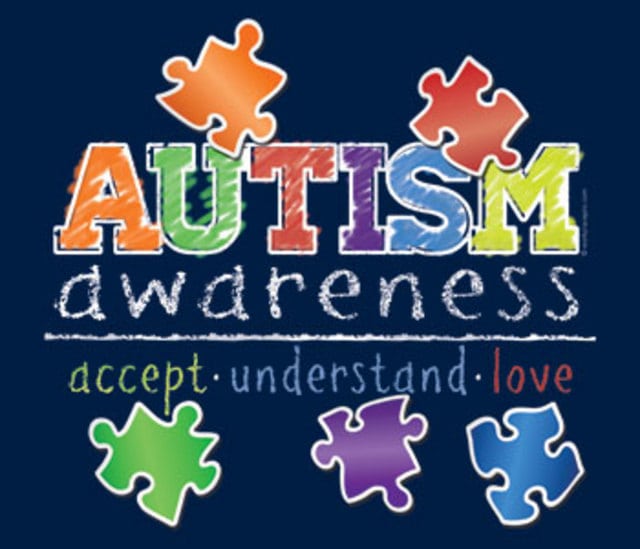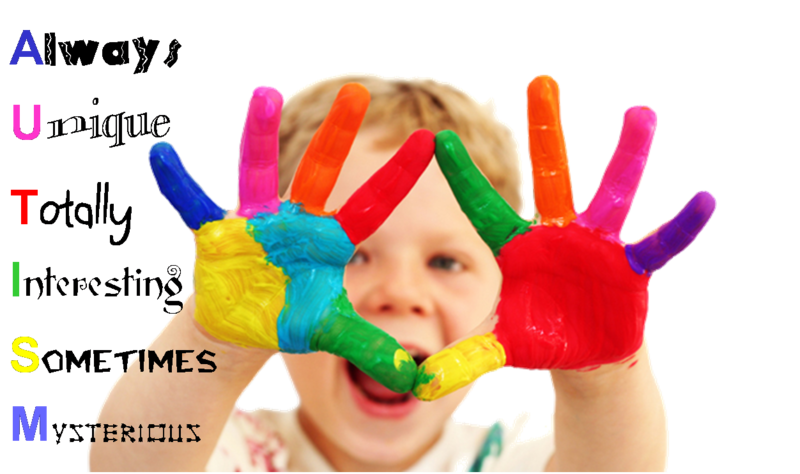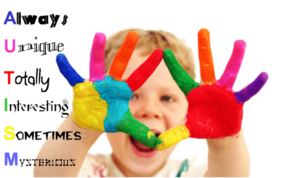Introduction
It’s National Autism Awareness Month. Let’s get informed.

Autism. It’s a small word. However, it has big effects on families. Previously, we discussed the scope and recent explosion of autism diagnoses. Here we delve into the disorders. Autism spectrum disorder (ASD) isn’t a disease as much as it is a range of disorders. Autism’s neurological effects affect one’s development. The effects are many and include the following:
- communication difficulties
- social impairments
- restricted, repetitive, and stereotyped behavioral patterns
Variations of Autism Spectrum Disorder
There is a wide variation in the expression of ASD and cases may be mild or severe. ASD occurs in all ethnic, socioeconomic and age groups. You may have seen or heard of variations of ASD, particularly the following:

- Autistic disorder (aka autism, classical ASD): This is the most severe form of ASD.
- Asperger syndrome: This diagnosis may be given to children with autistic behaviors who retain well-developed language skills.
- Childhood disintegrative disorder: Childhood disintegrative disorder is diagnosed in children who had developed normally and then suddenly deteriorated (typically between three to 10 years old), showing marked autistic behaviors.
- Pervasive developmental disorder not otherwise specified (usually referred to as PDD-NOS): This is a diagnosis given to those children with some symptoms of an ASD but not enough to be diagnosed with classical autism.
Causes of Autism
Although the cause of ASD is not known, it’s likely that both genetics and environmental factors play a role. Brain abnormalities in those affected suggest that ASD could result from the disruption of normal brain development early in fetal development. This notion is supported by the consistent discovery of defects in genes that control brain growth and that regulate how brain cells communicate with each other. The presence of certain environmental factors can further influence the expression of the function of these genes.
It is important to note the theory that parental practices are responsible for ASD has long been disproved.
Furthermore, twin and family studies strongly suggest that some people have a genetic predisposition to autism. Identical twin studies show that if one twin is affected, there is up to a 90% chance the other twin will be affected. Evidence also suggests that certain emotional disorders (e.g., bipolar disorder) occur more frequently than average in the families of people with ASD.

Symptoms of Autism
Impaired social interaction is the hallmark feature of autism spectrum disorder. This manifests in several ways:
- Babies with ASD may focus exclusively on one item for inordinately long periods of time, completely ignoring other people or objects.
- A child with ASD may appear to have developed normally, then suddenly withdraw and become indifferent to social activity.
- Children with ASD may fail to respond to their names and often avoid eye contact with other people.
- Children with ASD often have difficulty interpreting what others are thinking or feeling because they can’t understand social cues (e.g., tone of voice or facial expressions) and don’t watch other people’s faces for clues about appropriate behavior.
- Those with an ASD may lack empathy.
Other Symptoms
Other typical symptoms include the following:
- Repetitive movements such as rocking or twirling
- Self-abusive behavior such as biting or head-banging
- Delayed speech
- Speaking in a sing-song voice while limiting speech to a small group of favorite topics
- Referring to self by name instead of “I” or “me”
- Inability to play interactively with other children
- Epilepsy (seizure disorder), seen in approximately 20-30% of children with ASD
When to Get Your Child Evaluated
Of course, don’t wait long to get a child evaluated. Here is a laundry list of signs that an evaluation is necessary.
- not babbling or pointing by age one
- not using single words by 16 months or two-word phrases by age two
- unresponsive to name
- loss of language or social skills
- poor eye contact
- excessive lining up of toys or objects
- no smiling or social responsiveness
- impaired ability to make friends with peers
- impaired ability to initiate or sustain a conversation with others
- absence or impairment of imaginative and social play
- stereotyped, repetitive, or unusual use of language
- restricted patterns of interest that are abnormal in intensity or focus
- preoccupation with certain objects or subjects
- inflexible adherence to specific routines or rituals
If you have a loved one with suggestive symptoms, please arrange for early evaluation. The team involved will often have to address speed, psychiatric and neurological needs. Screening, early evaluation and treatment across the spectrum of symptoms offers the best opportunity for those affected to approximate a normal life.
Follow us!
Ask your SMA expert consultant any questions you may have on this topic. Also, take the #72HoursChallenge, and join the community. Additionally, as a thank you, we’re offering you a complimentary 30-day membership at www.72hourslife.com. Just use the code #NoChaser, and yes, it’s ok if you share!
Order your copy of Dr. Sterling’s books There are 72 Hours in a Day: Using Efficiency to Better Enjoy Every Part of Your Life and The 72 Hours in a Day Workbook: The Journey to The 72 Hours Life in 72 Days at Amazon or at www.jeffreysterlingbooks.com. Another free benefit to our readers is introductory pricing with multiple orders and bundles!
Thanks for liking and following Straight, No Chaser! This public service provides a sample of http://www.SterlingMedicalAdvice.com (SMA) and 844-SMA-TALK. Likewise, please share our page with your friends on WordPress! Also like us on Facebook @ SterlingMedicalAdvice.com! Follow us on Twitter at @asksterlingmd.
Copyright ©2013- 2019 · Sterling Initiatives, LLC · Powered by WordPress














